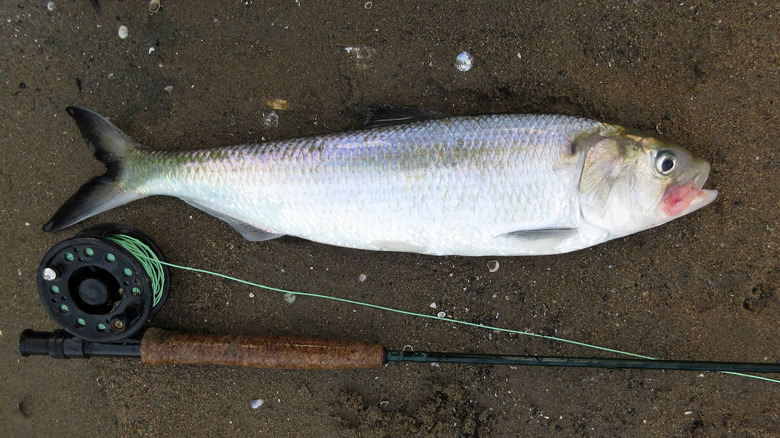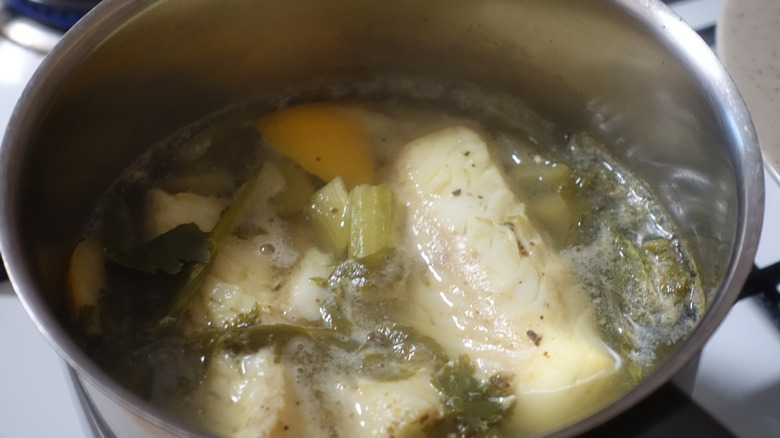The Major Downside Of Cooking American Shad
If there is one American fish that doesn't get the attention it deserves, it's shad. A favorite of the East Coast for centuries, shad are born in freshwater rivers but make their way out to the Atlantic to fatten up and procreate. After a few years, they return to the rivers to spawn. Owing to the fact that the river water needs to be a minimum of 55 degrees Fahrenheit for the shad eggs to survive, the fishing season starts earlier in the south than it does in the north. A member of the herring family, shad are prized among anglers and cooks for their deliciously sweet flavored meat (via The Daily Hampshire Gazette).
Despite this abundance of flavor, the American shad does have a major downside when it comes to cooking it. When cooking almost any finned fish, one always runs the risk of encountering a pin bone or two. However, most fishmongers or home cooks with decent knife skills will be able to debone most fish with no problem. Not so with shad. These fish are notoriously tricky to filet owing to the fact that they have an incredible amount of small bones throughout their body. According to the South Carolina Coastal Resources Department, these bones are essential for the shad's journey from the river to the ocean but make them very tricky to dine on. Fortunately, there are a few cooking methods that will take care of the shad's boney nature to make for a more pleasant eating experience.
Dealing with the bones
The number of bones found in shad doesn't make it any less delicious, despite being the fish's greatest downside. Unfortunately, the bones can make shad very difficult to eat if not prepared properly. Described in Mi'kmaq mythology as a porcupine turned inside out, shad is known as a fish that is nearly impossible to filet. According to Hunter Angler Gardner Cook, the art of deboning a shad is all but lost on modern fishmongers. This does not mean that it cannot be done, but dedicated skill is required to pry the prized meat away from the bones. There are, however, a couple of cooking methods that help remove the bones from the equation.
According to Seafood Source, the very best method for getting around shad bones is to slow-cook the fish. Baking or steaming at low temperatures for a prolonged period will dissolve the bones entirely. The Spruce Eats also recommends smoking the shad on a cedar plank. Not only will the smoke and cedar mix well with the oils of the fish, but the softened meat will simply slide off of the bones undamaged. Poaching shad in a bouillon broth, as you would for cod or other white fish, is also an excellent option as it injects the meat with flavor and dissolves the bones in the process.

